Apple iPhone 4S: Thoroughly Reviewed
by Anand Lal Shimpi & Brian Klug on October 31, 2011 7:45 PM EST- Posted in
- Smartphones
- Apple
- Mobile
- iPhone
- iPhone 4S
GPU Performance Using Unreal Engine 3
In our iPad 2 review I called the PowerVR SGX 543MP2 Apple's gift to game developers. Apple boasted a roughly 9x improvement in raw GPU compute power over the A4 into the A5. The increase came through more execution resources and a higher GPU clock. The A5 in the iPhone 4S gets the same GPU, simply clocked lower than the iPad 2 version. Apple claims the iPhone 4S can deliver up to 7x the GPU performance of the iPhone 4, down from 9x in the iPad 2 vs. iPad 1 comparison. Why the delta?
The iPad 2 has both a larger battery and a higher resolution display. There are 28% more pixels to deal with on the iPad 2 vs the iPhone 4S and 9x vs 7x actually works out to be a 28% increase. The lower clocked GPU goes along with the lower clocked CPU in the 4S' version of the A5 to keep power consumption in check and because the platform doesn't need the performance as much as the iPad 2 with its higher resolution display.
| Mobile SoC GPU Comparison | |||||||||||
| Adreno 225 | PowerVR SGX 540 | PowerVR SGX 543 | PowerVR SGX 543MP2 | Mali-400 MP4 | GeForce ULP | Kal-El GeForce | |||||
| SIMD Name | - | USSE | USSE2 | USSE2 | Core | Core | Core | ||||
| # of SIMDs | 8 | 4 | 4 | 8 | 4 + 1 | 8 | 12 | ||||
| MADs per SIMD | 4 | 2 | 4 | 4 | 4 / 2 | 1 | ? | ||||
| Total MADs | 32 | 8 | 16 | 32 | 18 | 8 | ? | ||||
| GFLOPS @ 200MHz | 12.8 GFLOPS | 3.2 GFLOPS | 6.4 GFLOPS | 12.8 GFLOPS | 7.2 GFLOPS | 3.2 GFLOPS | ? | ||||
| GFLOPS @ 300MHz | 19.2 GFLOPS | 4.8 GFLOPS | 9.6 GFLOPS | 19.2 GFLOPS | 10.8 GFLOPS | 4.8 GFLOPS | ? | ||||
GLBenchmark continues to be our go-to guy for GPU performance under iOS. While there are other reputable 3D benchmarks, GLBench remains the only good cross-platform (iOS and Android) solution we have today.
The performance gains live up to Apple's expectations (Update: our original 4S for Egypt/Pro were incorrect. We had two sets of graphs, one internal and one external - the latter had incorrect data. We have since updated the charts to reflect the 4S' actual performance. Sorry for the mixup!):
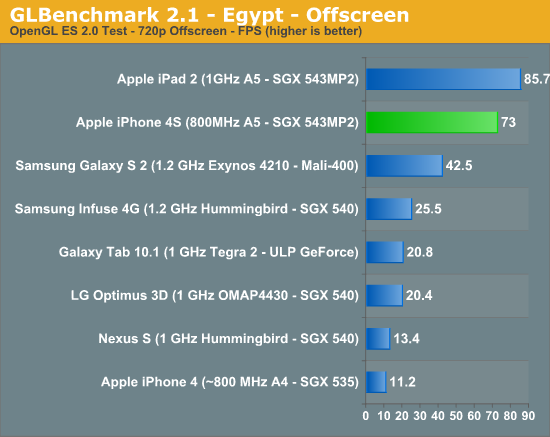
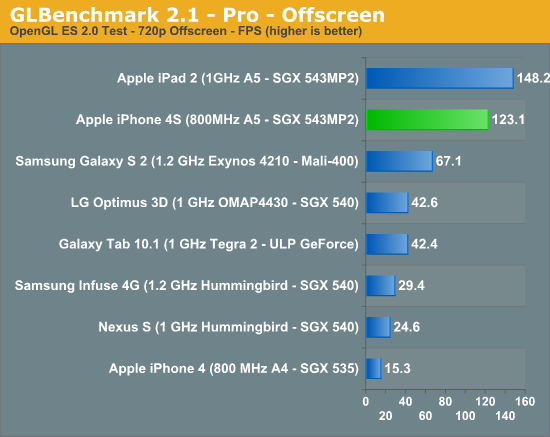
GLBenchmark gets around vsync by rendering offscreen, so the 4S is allowed to run as fast as it can. Here we see a 6.46x higher frame rate compared to the iPhone 4.
It's obvious that GLBenchmark is designed first and foremost to be bound by shader performance rather than memory bandwidth, otherwise all of these performance increases would be capped at 2x since that's the improvement in memory bandwidth from the 4 to the 4S. Note that we're clearly not overly bound by memory bandwidth in these tests if we scale pixel count by 50%, which is hardly realistic. Most games won't be shader bound, instead they should be more limited by memory bandwidth.
At the iPhone 4S introduction Epic was on stage showing off Infinity Blade 2, which will have new visual enhancements only present on the 4S thanks to its faster GPU. Thus far Epic has been using GPU performance improvements to make its games look better and not necessarily run faster (although they do) since the target is playability on all platforms. What I wanted however was a true apples-to-apples comparison using Epic's engine as it is arguably the best looking platform to develop iOS games on today.
Epic offers a free license to Unreal Engine 3 to anyone who wants to use it for non-commercial use. If you want to sell your UE3 based iOS game, you don't have to pay a large sum to license Epic's engine up front. Instead you toss Epic $99 and pay royalties (25%) on any revenue beyond the first $50K. It's a great deal for aspiring game developers since you get access to one of the best 3D engines around and don't need any additional startup capital to use it. If your game is a hit Epic gets a cut but you're still making money so all is good in the world.
The process starts with UDK, the Unreal Development Kit. Epic actually offers a great deal of documentation on developing using UDK, making the whole process extremely easy. The freely available UDK can target Windows, Mac OS X and iOS platforms. If you want Android support you'll have to pay to license the dev kit unfortunately. Given how successful Infinity Blade has been under iOS, I suspect this is a move partially designed to keep Apple happy. It's also possible the Android UE3 dev kit is simply not as far along as the iOS version.
Along with every UDK download, Epic now provides the full source code to its well known iOS Citadel demo. With access to Citadel's source code and Epic's excellent (and freely available) development tools I put together a real-world GPU test for iOS.

What's that? A frame counter in iOS? Huzzah!
The test shows us frame rate over the course of a flythrough of Epic's Citadel demo. This is simply the standard Citadel guided tour but with UE3's frame recording statistics enabled. Once again, UDK gave me the tools needed to accurately profile what was going on. For developers this would be helpful in tuning the performance of your app, but for me it gave me the one thing I've been hoping for: average frame rate in a UE3 game for iOS.
The raw data looks like this, a graph of frame render times:
You're looking at frame render time in ms, so lower numbers mean better performance. Notice how the iPhone 4S graph seems to remain mostly flat for the majority of the benchmark run? That's because it's limited by vsync. At 60Hz the frame render time is capped to 16.7ms, which is approximately where the 4S' curve flattens out to. The 4S could likely run through this demo even quicker (or maintain the same speed with a heavier graphical workload) if we had a way to disable vsync in iOS.
On the iPhone 4 however, frame times are significantly higher - more than 2x on average. You also see significant spikes in frame time, indicating periods where the frame rate drops significantly. Not only does the 4S offer better average performance here but its performance is far more consistent, hugging vsync rather than wildly bouncing around.
The chart below summarizes the two graphs above by looking at the average frames rendered per second throughout the benchmark:
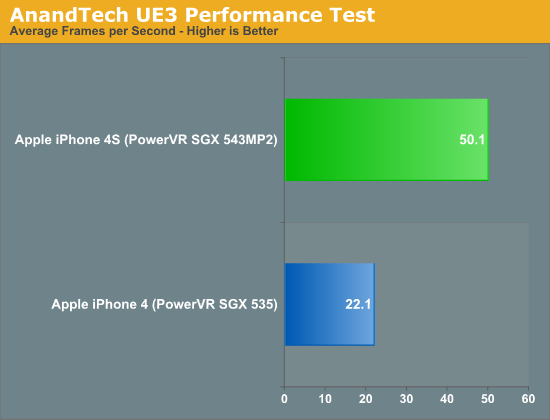
The iPhone 4S averages 2.3x the frame rate of the iPhone 4 throughout our test. I believe this gives us a more realistic value than the 6x we saw in GLBenchmark. A major cause for the difference is the vsync limitations present in all iOS apps that render to the screen. On top of that, while we're obviously not completely limited by memory bandwidth, it's clear that memory bandwidth does play a larger role here than it does in GLBenchmark.
The Citadel demo by default increases rendering quality on the iPhone 4, but a quick look at the game's configuration files didn't show any new features enabled for the 4S. Chances are the version of Citadel included with the UDK was built prior to the 4S being available. In other words, the 4 and 4S should be rendering the same workload in our benchmark. To confirm I also grabbed a couple of screenshots to ensure the two devices were running at the same settings:
This is actually the most stressful scene in the level, it causes even the 4S to drop below 30 fps. With the camera stationary in roughly the same position I saw a 74% increase in performance on the 4S vs the iPhone 4.
Most game developers still target the iPhone 3GS, but the 4S allows them to significantly ramp up image quality without any performance penalty. Because of the lower hardware target for most iOS games and forced vsync I wouldn't expect to see 2x increases in frame rate for the 4S over the 4 in most games out today or in the near future. You can expect a smoother frame rate and better looking games if developers follow Epic's lead and simply enable more eye-candy on the 4S.


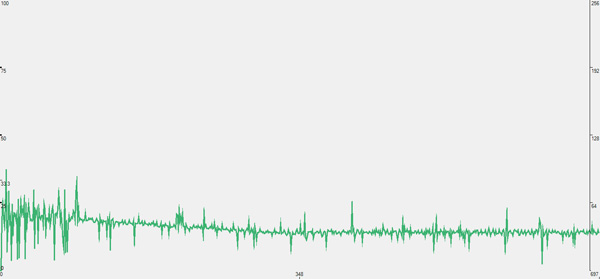
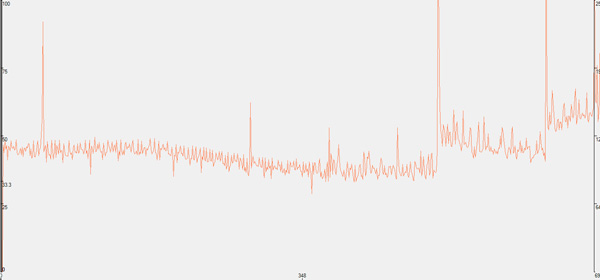










199 Comments
View All Comments
ados_cz - Tuesday, November 1, 2011 - link
I have the 4S now and the problem is gone but once my girlfriend comes with her 4, I will make a video and post it to prove you wrong. People have no problems only in areas where signal is really strong. Why would I possibly want to lie?wonderfield - Tuesday, November 1, 2011 - link
What's of concern here is not whether the issue (signal loss) can be demonstrated but whether the phone is, in Brian's/Anand's words, "usable" with the defect or not. It's certainly possible for the GSM iPhone 4 to be rendered unusable in a low signal strength area with a natural, right-handed grip just as it can be rendered unusable with a death grip. That's not to say the phone will be unusable in most scenarios, however, because in most scenarios the phone should function properly. There are certainly edge cases, and the issue is more significant for those who're left-handed and for those who live/work in very poor coverage areas (where it can become an issue), but, again, that's not the typical use case. It's why I categorize Brian's claim that the GSM 4 is not usable without a case as being disingenuous.Realistically, you don't need a "really strong" signal to have not have any problems with the phone, you only need a signal great enough to overcome any attenuation introduced by making contact with the antenna. The extent of the attenuation, as demonstrated in another Anandtech article to which you might refer, is not as significant as portrayed by some media outlets.
ados_cz - Tuesday, November 1, 2011 - link
As far as the need for good signal went I needed to use the case all the time otherwise I would always have to hold the phone in unnatural way. iPhone 4/S is a really beautiful piece of hardware and It was really upseting that I had to use the case and spoil the desing. My close friend living just 15 miles next to me in Perth does not use the case and when he does not care to not to hold the phone in sensitive area, the call drops. It happend to me with him on the phone on few occasions. Few of my friends at uni need to use the case for iPhone 4 as well. The problem was not overstated. Either learn to hold the phone unnaturaly avoiding joining those two critical antenna strips or use a case. I opted for a case. My friend in the London got on well without case, but he learned to hold it by the to when calling. Anyway, I am glad that I have the 4S now and I think my girlfriend does not mind the case on her (former mine) iPhone 4. It so well made piece of hardware and so affordable here in Britain. You are being ripped off in US. Check the deals for iPhones on www.three.co.uk I got mine iPhone 4 for 69 pounds 5 months ago with two years contract for 35 pounds a month (2000 mins any network, 5000 mins mine network, unlimited 3G data with no fairu user policy). I paid 189 pounds for girlfriends (now mine) 4S for 32GB white version just few days ago and she got the same 35 pounds contract.Tetracycloide - Tuesday, November 1, 2011 - link
"I have hundreds of friends who have iPhone 4's who've never had any issue with signal loss at all."Really? Name them. Numbered from one to at least two hundred if you please.
Overstating the strength of your anecdotal evidence doesn't make you look right it makes you look biased.
For what it's worth, I think you're a huge tool for, well, being such a huge tool.
doobydoo - Wednesday, November 2, 2011 - link
Don't be ridiculous.To label someone a 'tool' for stating that their friends don't have issues with signal loss on a phone, is quite frankly ironic.
To suggest I would list my friends names in a bid to convince such a low level individual is even more ridiculous than the rest of your comment (which is a lot).
If you really need hard evidence, I'd point you in the direction of the millions of iPhone customers who gave the iPhone 4 the highest satisfaction ratings of any phone, full stop. Bit hard to imagine that happening if they cant make calls on it, don't you think?
To claim I'm overstating my quite logical claim doesn't make you look right, it makes you look biased.
Tetracycloide - Wednesday, November 2, 2011 - link
I labeled you a tool because your response to another commenter saying they experienced an issue you and 'your friends' never saw was 'your a liar' or more literally "For what it's worth, I don't believe you anyway." That's where you were a tool, that part right there.Your 'hundreds' comment was absurd and you know it. To obtusely pretend I'm actually asking you for a list of names and act like that's absurd (it was obviously rhetorical) is to miss the point which was: you do not actually have 200+ individual examples from 'friends' to draw from. That's absurd.
Your claim was hardly 'logical' it was an absurdly overblown statistic that, even if it was accurate, would still be anecdotal. As are you're 'millions of iPhone customers' by the way. The phone looses signal if held incorrectly. That is the objective reality, full stop.
doobydoo - Friday, December 2, 2011 - link
How ironic that your justification for calling me a tool, is that I essentially disbelieved someone else, after that's all your comments to me are based on.Not only that, but how ridiculous and illogical to say someone is a tool for not believing something. Grow up?
'Hundreds' is not absurd at all, perhaps it sounds absurd to a social recluse? But I can actually name at least 200 friends of mine who use iPhones. Sorry if having friends is a strange concept to you. How dare you claim that you 'do not believe' my 200+ friends claim - that makes you a tool (it's a definition handed down to me by someone special).
Even if my claim was anecdotal, so what? Your criticism of my claim wasn't that it was anecdotal, and I never masqueraded it as anything other than what it was?
The 'MILLIONS' of iPhone customers is not anecdotal at all, by the way - they HAVE factually given the iPhone 4 the best user ratings of any phone of all time. That's reality, fact, pure and simple. They wouldn't do this, if they couldn't make phone calls, don't you agree?
I own an iPhone 4, and it doesn't LOSE (wtf is 'looses') signal in any meaningful way (as in, it never affects call quality or causes calls to be dropped) if held in any way I want. Unbelievable that you make such claims then try to define them as 'objective' - exactly the criticism you levy at me.
gcor - Monday, October 31, 2011 - link
Reading the specs on a lead acid 12v battery I have, I discovered that the higher the load in amps, the lower the total amp hours the battery will output. For example, the spec's say that a particular model can deliver a max of 1 amp hour over 20 hours, but only .5 amp hour over 12 hours.I'm guessing this is also true for the batteries in smartphones and laptops. This assumption seems to be supported when looking at the 3D gaming battery life results in the review, where a 10% increase in power consumption on the 4S, resulted in a 25% drop in battery life.
I assume this has implications for the "race to sleep" concept, as an increase in amp draw by the device may reduce the battery efficiency enormously, as well as actually using more power.
Anyway, just a thought to add into the mix when estimating a % speed increase required for a pay off in additional sleep.
Pliablemoose - Monday, October 31, 2011 - link
Your recommendations mirror my own thoughts, picked up 3 iP4's in the last month, 2 ATT models to put on Straight Talk for $499/year each with unlimited talk text and data (yes, I know it's not really unlimited data) for my kids, and a Verizon iP4 for me. I actually replaced a ThunderBolt with an iP4, got tired of the poorly executed radio software and the constant reboots to keep it connected. The ThunderBolt is a heck of a 4G LTE modem, sort of a poor phone, and definitely a brick with the extended battery it needs get me through a day of web surfing and stock trading.Saving my upgrade next year for an iP5, and keeping my fingers crossed for at least a 4" screen.
ltcommanderdata - Monday, October 31, 2011 - link
"Furthermore Apple even seems to be ok with combining a process shrink with a new architecture as we saw with the iPhone 3GS. It's generally thought of as a risky practice to migrate to both a new process technology and a new architecture in the same generation, although if you can pull it off the benefits are wonderful."I don't believe Apple has actually pushed a new process and architecture simultaneously. Up to now, the iPod Touch was generally the test platform for new processes as a shrink on an existing architecture.
The full evolution is:
iPhone 2G/1st gen iPod Touch/iPhone 3G 412MHz ARM11 90nm
2nd gen iPod Touch 533MHz ARM 11 65nm
iPhone 3GS 600MHz Cortex A8 65nm
3rd gen iPod Touch 600MHz Cortex A8 45nm
iPad 1/iPhone 4/4th gen Touch 1GHz/800MHz Cortex A8 45nm
iPad 2/iPhone 4S 1Ghz/800MHz Cortex A9 45nm
It is curious that we haven't seen a shrink of an existing chip as a pilot for a next gen process, either Samsung 32nm or TSMC 28nm, although the iPod Touch not being updated this year didn't leave many options. It would no doubt be too risky to put a new process pilot chip on the iPhone 4S. I believe iFixit did find some different markings on the 2011 iPod Touch, but I haven't heard about any size difference so that makes a large shrink unlikely. Is there any chance the 2011 iPod Touch could be piloting the A4 on a TSMC 40nm process as a means of getting that relationship off the ground? Is there enough commonality in the tools for the 40nm and 28nm processes to make piloting on 40nm a worthwhile interim step?